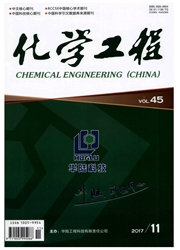

 中文摘要:
中文摘要:
反应器网络综合的任务在于寻求适宜的反应器类型、尺寸及反应单元间的连接关系并确定各反应器的操作条件,其研究方法主要包括超级结构法和目标法,采用的基本单元均为一维理想模型。文中同时考虑传质、传热、流体流动以及反应动力学,通过偏微分方程描述轴向及径向上的温度、浓度分布,建立了二维反应器模型。基于该二维传递模型,采用状态空间构建反应器网络,并以年度总费用为目标函数评价反应器系统的经济性。最后,以提出的模型对环氧丙烷反应器网络进行了优化设计,实例验证了方法的有效性。
 英文摘要:
英文摘要:
The reactor network synthesis is focused on establishing the structure which involves determining the proper type, size, interconnections of the reactor units and operating conditions. The researches on the reactor network synthesis mainly include superstructure and targeting methods, whose units are all based on onedimensional ideal reactor. A two-dimensional reactor model, which focuses on heat and mass transfer, fluid flow and reaction kinetics, was developed to describe the temperature and concentration distribution both in axial and radial directions by partial differential equations. The basic model was employed to construct a state-space framework for reactor network synthesis. Total Annual Cost (TAC) as an objective was considered to describe the economic performance of reactor system. And a reactor network of propylene-oxide was illustrated to achieve an optimal design through the method proposed, which is demonstrated to be effective.
 同期刊论文项目
同期刊论文项目
 同项目期刊论文
同项目期刊论文
 期刊信息
期刊信息
